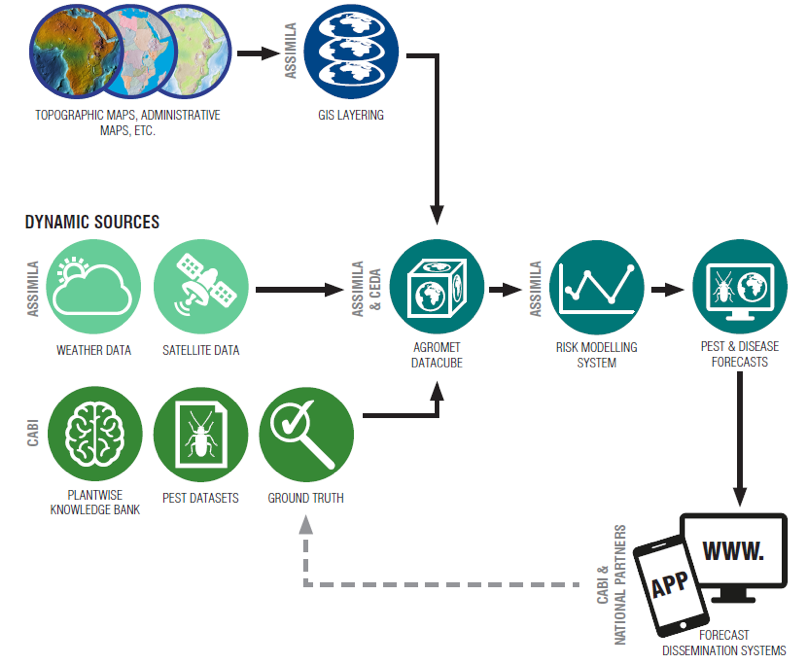Pest Prediction (CABI)
www.cabi.org
Overview
Pest Prediction aims to produce cutting edge research to provide pest and disease monitoring and forecast information, integrating multiple sources of data, Earth observation (EO), meteorological and vertical looking radar, to support decision making in the sustainable management of insect pests and diseases. Predictive models on wheat rust severity that are passed to government agencies so that they can decide if a coordinated action is required at national or province level.

Solution benefits
- Predictive models on wheat rust severity that are passed to governments so that they can decide if a coordinated action is required at national or province level.
- Developing locust development models and biopesticide suitability models to control locusts to help governments to decide a) where to send resources for locust control and b) if biopesticides can be effective in controlling the locusts in those current climatic conditions.
- Modelling helps the government to decide when is suitable to spray and hence have better informed pesticide application.
Key technical features
- Predictive models for wheat rust severity are based on EO algorithms using MODIS data and ancillary information such as weather and crop data than can be updated every 16 days at a resolution of 500 metre.
- The results of the monitoring models for wheat diseases and pests are automatically delivered in an online platform with free access from computers or mobile devices.
- Monthly reports of disease severity for wheat are delivered to key stakeholders (e.g. plant protection organisation and researchers) who interpret the results.
- The locust development model predicts the temporal progression of locust generations from hatching to adulthood based on accumulated temperature using Numerical Weather Prediction, reanalysis and EO temperature data (e.g. ECMWF Re-Analysis climate data and the Global Forecast System from NOAA). A similar approach is used to estimate the efficiency of biopesticide (time to kill locusts at a given period of spraying).
Case studies
Predictive models for wheat rust severity in China have been developed by the Institute of Remote Sensing and Digital Earth Institute (RADI) under the Chinese Academy of Sciences (CAS). The wheat rust forecasting service has been adopted by the Ministry of Agriculture (MoA) in China to estimate potential damage to wheat crop. Forecasts are reviewed by experts before publication in monthly reports. This information helps MoA officials to plan their crop protection activities and if needed, mobilise resources across China.
Organisation overview
CABI (Centre for Agriculture and Biosciences International) is an international not-for-profit organisation that improves people’s lives worldwide by providing information and applying scientific expertise to solve problems in agriculture and the environment. The solutions described here are the result of the Sino-UK project “Integrating Advanced Earth Observation and Environmental Information for Sustainable Management of Crop Pests and Diseases” integrated by Remote Sensing and Digital Earth Institute (RADI), CABI, Assimila Ltd, King’s College London, Institute of Plant Protection (IPP-CAAS), Zhejiang University and Rothamsted Research.

